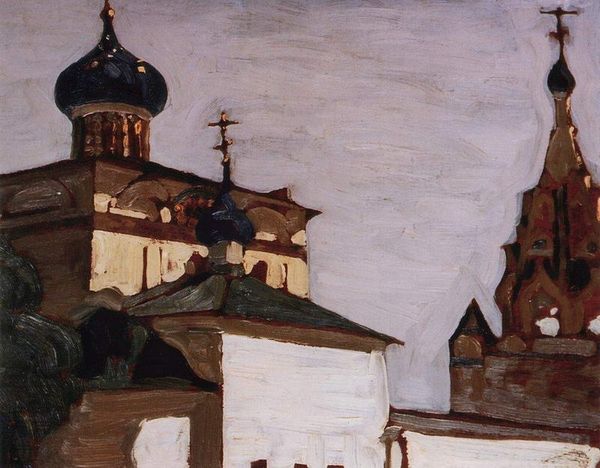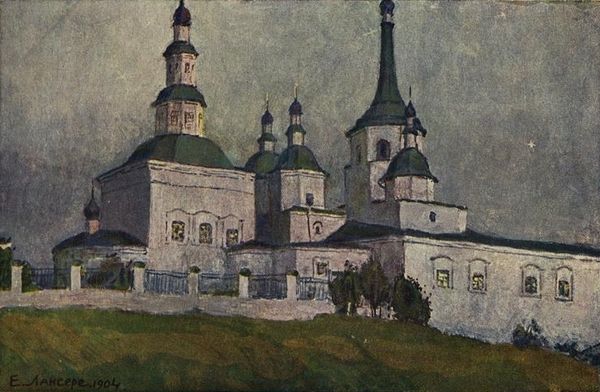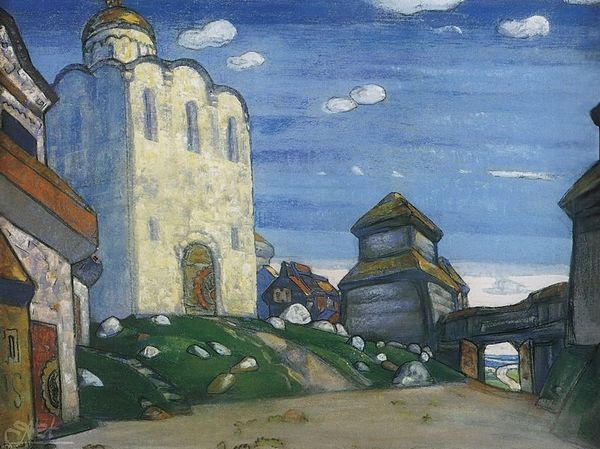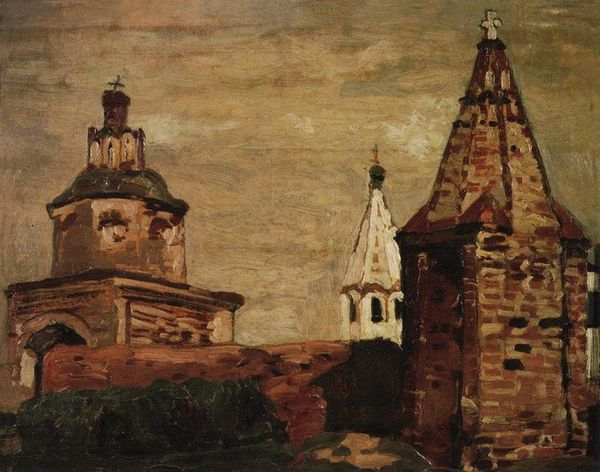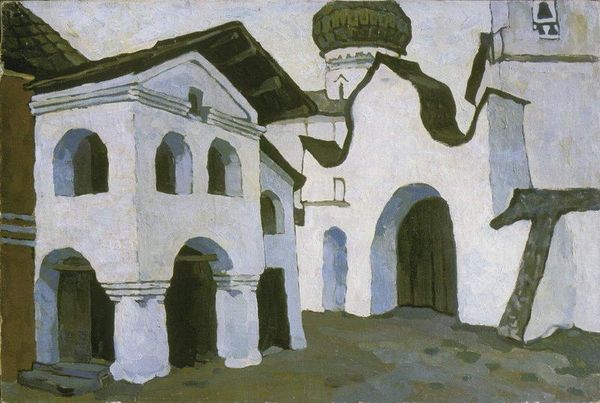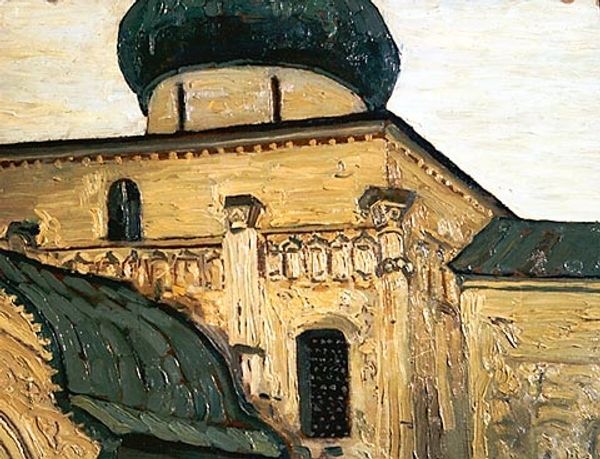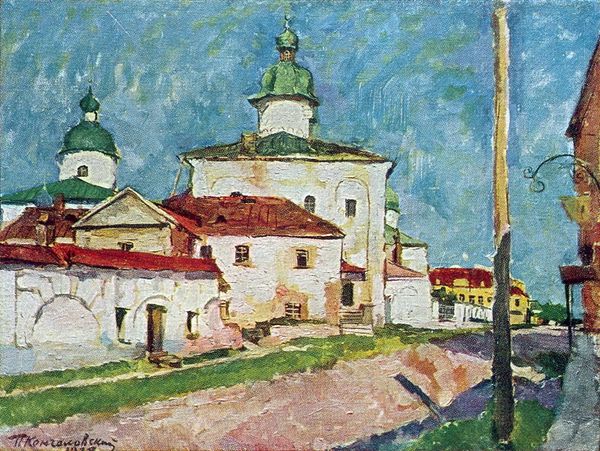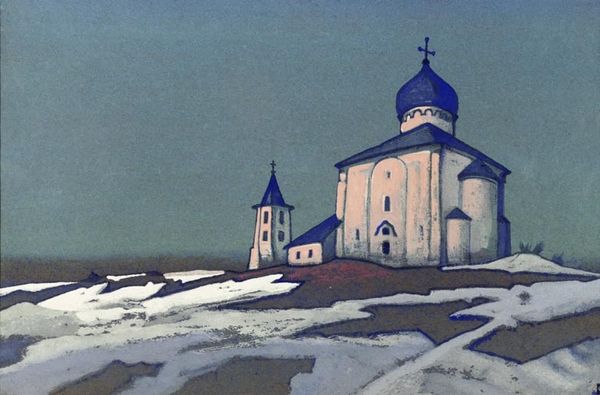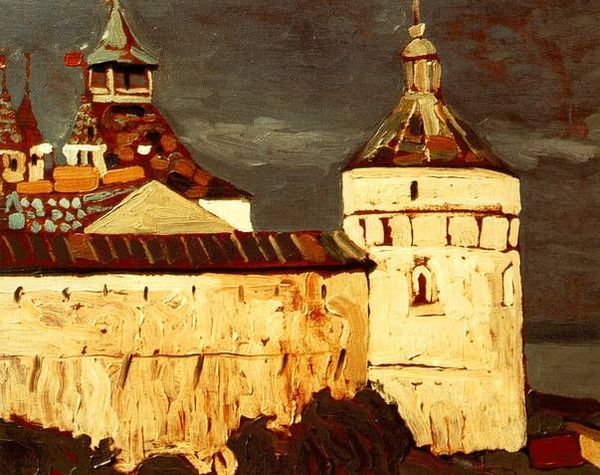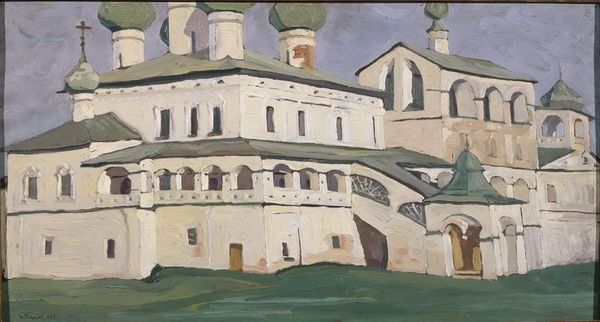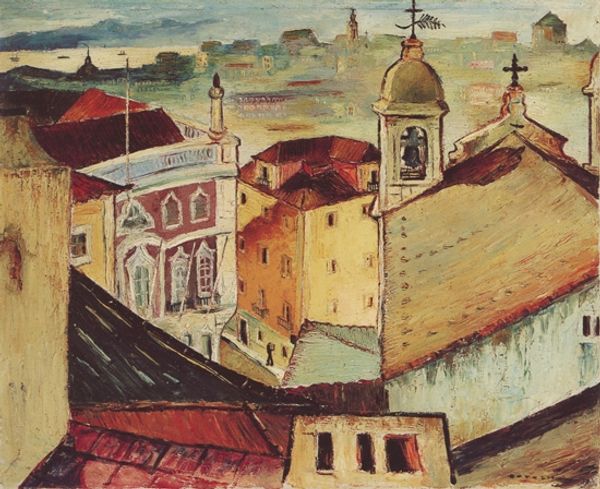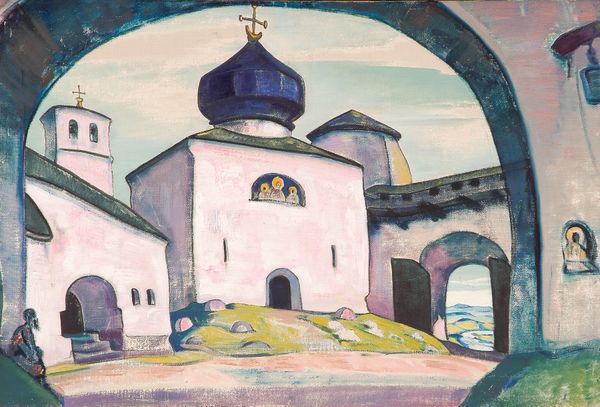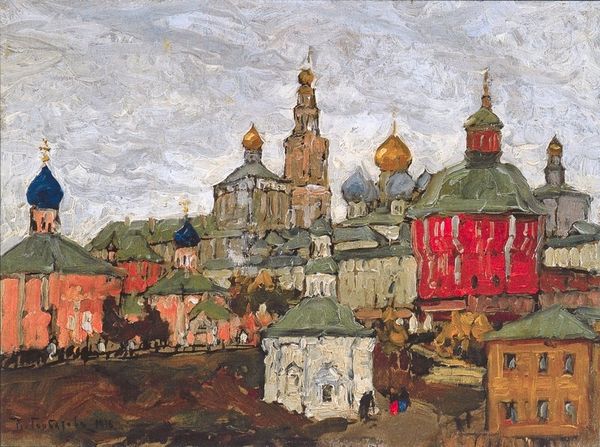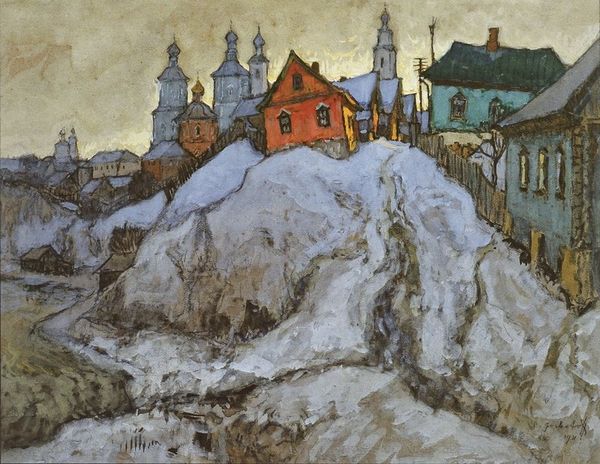
Copyright: Public domain
Curator: Here we have Nicholas Roerich's "Church of Assumption in Pskov," painted in 1903 using oil paint. Editor: Immediately, I'm struck by the mood—it's heavy, almost brooding. The stark contrast between the shadowed foreground and the pale yellow sky creates this tension, like a storm is just passing, and secrets hang in the air. Curator: The composition is indeed noteworthy. The church's architecture—its domes and arches—evokes a sense of history and spiritual depth, but the color palette mutes this effect. We can consider here how Roerich plays with the inherent symbolism of religious structures, undermining them through romantic art style. Editor: Romanticism...right. For me, there's an underlying sadness, though. Those shadowed areas almost seem to be consuming the architecture. It speaks to the passage of time, doesn't it? This sense that even the most enduring structures will eventually be claimed by the earth, forgotten, leaving only darkness. Curator: An interesting interpretation, which pivots to the historicity implied within the architectural form. Indeed, Roerich does suggest the romantic preoccupation with the sublime via nature through the architectural monument, evoking not a sense of security through its structure but an implied narrative of mortality and, arguably, national destiny. The simplified forms could equally represent Roerich's interpretation of Russian identity in the face of rapid modernisation at the turn of the 20th century. Editor: Perhaps Roerich himself felt that looming change? He must've been pretty astute about Russia at this time. There's an uncanny familiarity in these rough forms, that really speak to Russian architectural spirit that doesn't bow before the tests of time. Curator: Undoubtedly, one way of putting it. Before we move on, note how the choice of a flattened perspective denies any deep spatial relationships while simultaneously implying distance. This suggests an emphasis on symbolism over pure mimesis, to put it in another way. Editor: Mimesis aside, this piece whispers more than it shouts. It is not simply a church captured on canvas; it's an impression, a melancholic memory almost lost in shadows, which probably says a thing or two about Russia's own path in history. Curator: Precisely, and hopefully our listeners will see something of this too.
Comments
No comments
Be the first to comment and join the conversation on the ultimate creative platform.
